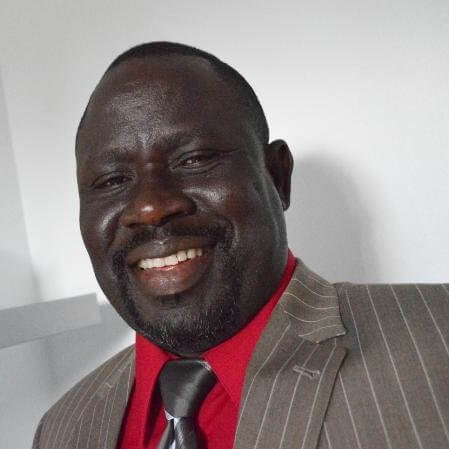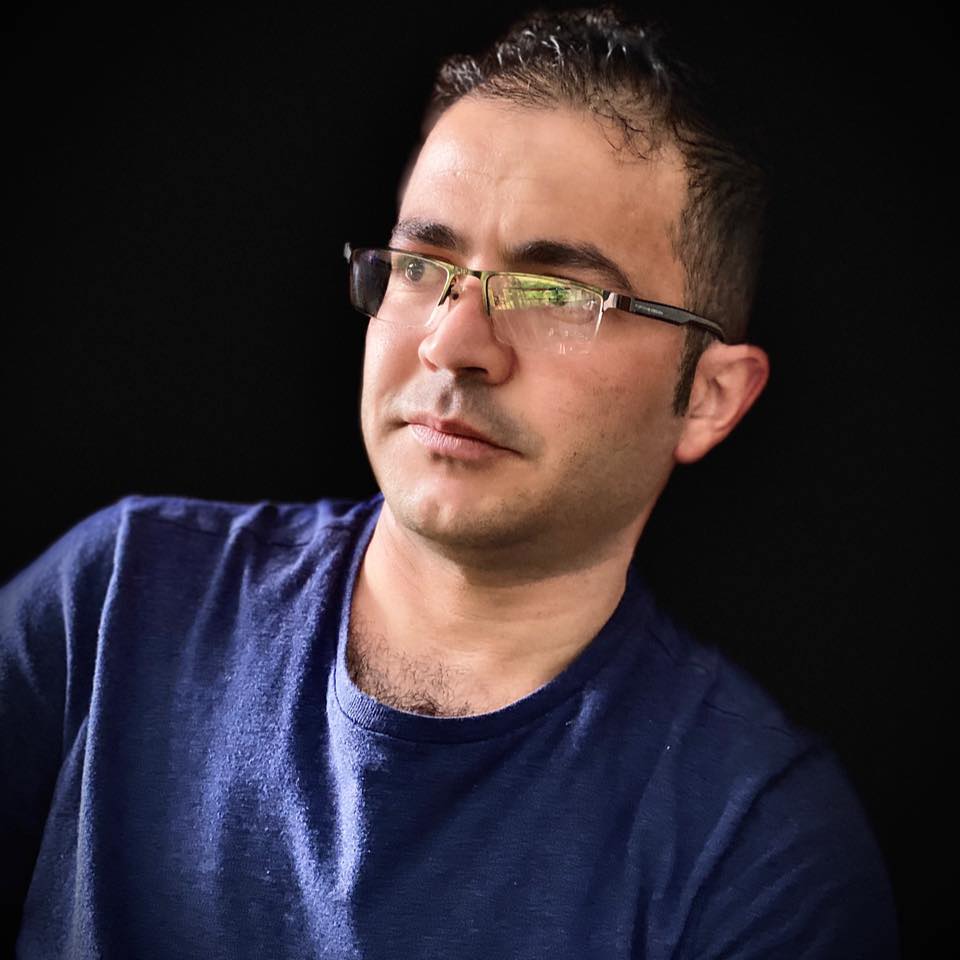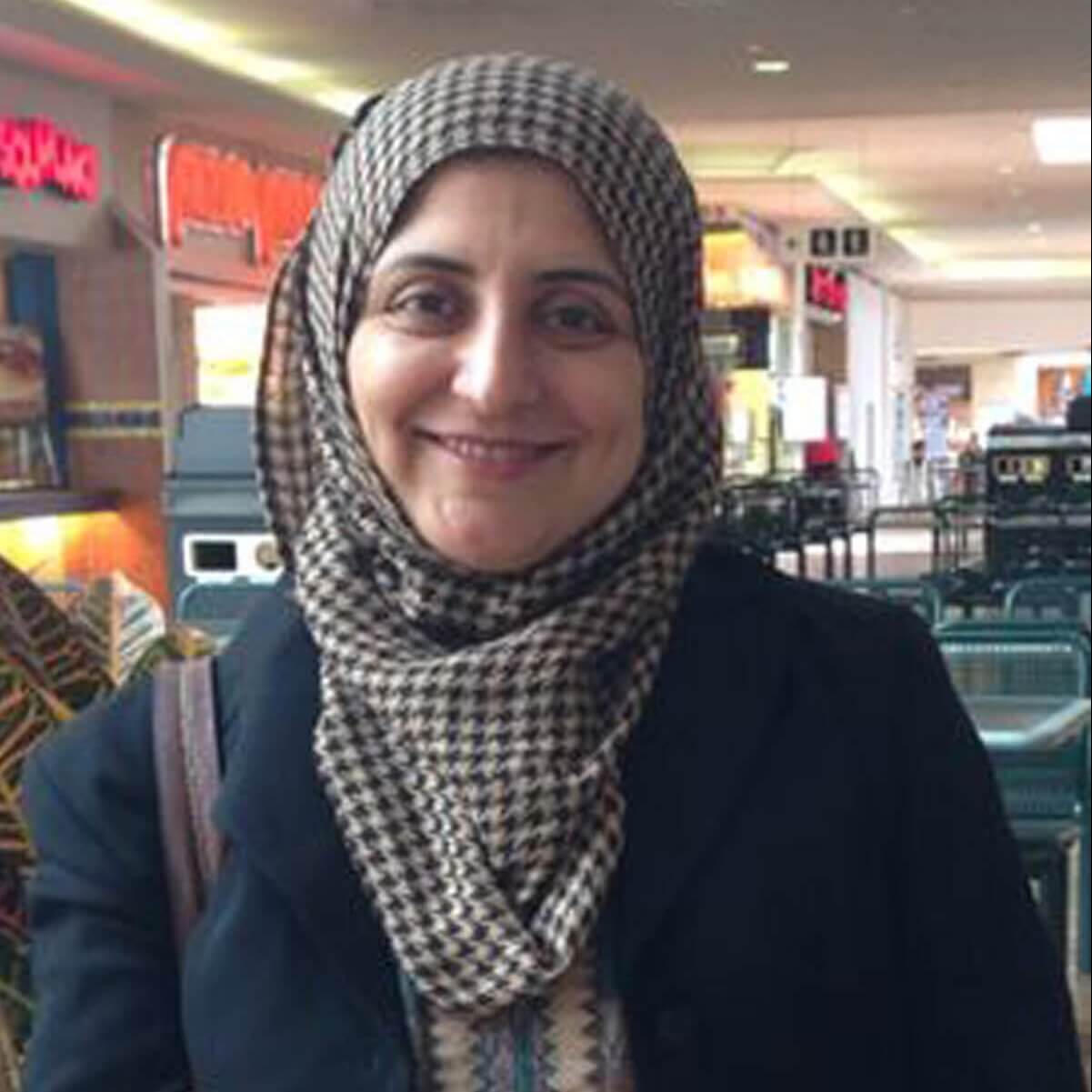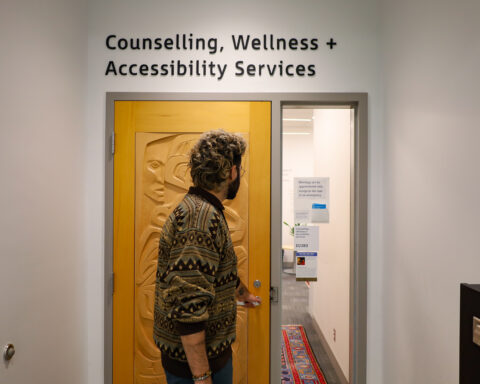The COVID-19 has had a greater mental health impact on recent immigrants and racialized people than on other demographics, bringing in its wake isolation, depression, increased alcohol and drug consumption and domestic violence, but ethnic media coverage has helped to raise awareness about these issues, especially among communities which consider them a stigma.
Twenty-five per cent of people who have lived in Canada for less than five years reported their mental health was bad or very bad, compared to 19 per cent of Canadian-born respondents, according to a widely cited study based on six online Leger surveys conducted between Oct. 29, 2020 and Jan. 3, 2021 among more than 9,000 respondents. Nearly 27 per cent of respondents who identified as South Asian, 20 per cent of those who identified as Black, and 18 per cent of those who identified as Chinese reported the same.
Higher anxiety levels among immigrants about all aspects of life under COVID-19, from social ties to economic impacts, were already visible in a Statistics Canada survey in May. Refugees were said to be especially vulnerable because of past traumas. Another report noted an increase in the number of families facing homelessness and placed in motels, which was negatively affecting the mental health of the children. Most of the newcomers in these situations were asylum claimants.
The media also quoted immigration consultants and NGO staff working directly with immigrants, who confirmed that their clients were facing more psychological issues during the pandemic. At the same time, one radio show host floated a theory that immigrants might be able to deal with social distancing better than others because they are used to being separated from family members.
- Overview of ethnic media coverage
- Comparative analysis with mainstream media
- Word from our partner, MIREMS
- Commentary from the NCM Collective
The stigma of mental health problems
An inadvertent side-effect of the pandemic has been that mental health, domestic violence and addiction problems received more media attention, which has hopefully made these problems less of a taboo.
The media carried awareness raising campaigns by politicians, public health officials, the police, and NGOs. Only on Jan. 17, Liberal MP Navdeep Singh Bains gave an interview for a Punjabi TV station, saying that mental health issues will be a long-lasting legacy of COVID-19, but in South Asian culture people don’t talk about these things. He called for an open dialogue, especially with children.
The Peel police initiative on World Suicide Prevention Day to help people recognize that someone they know might be suicidal was another example.
The media also covered mental health–related funding announcements by provincial and federal governments and promoted various support services and programs, especially tailored to particular communities and culturally-informed. One such service, made available by Kids Help Phone in October, was counselling for youth in Arabic. As it was stressed, counsellors were made sensitive to the fact that in some cultures mental health is not openly discussed.
Alcohol abuse and drug addiction
With the lockdown-induced isolation and stress, higher alcohol consumption and drug abuse have been reported across the country. Spikes in opioid overdoses were reported in B.C., Alberta and Ontario. In Ontario, overdose deaths rose by 40 per cent during the pandemic, media wrote in November, citing a report which also showed higher prevalence in more ethnically diverse neighbourhoods with higher percentages of recent immigrants.
In British Columbia, drug addiction and overdose deaths were reported to be a serious issue in the South Asian community, especially among international students. Students are particularly at risk, as they are away from their families and experiencing a lot of peer pressure. At the same time, there is a lot of stigma and shame around drug use in the South Asian community, which prevents parents from discussing it with their teenage children.
The “shadow pandemic” of domestic violence
Ethnic media coverage of family and intimate partner violence during the COVID-19 pandemic appeared to be spotty. The increase in domestic violence was observed in May and was linked to “the stress of being locked up at home” as well as substance abuse. More attention was devoted to the issue again in August, after a woman was shot dead in Brampton, allegedly by her boyfriend, who had already had a criminal record.
The issue came into spotlight again in late November, in connection to a Region of Peel public awareness campaign to mark the International Day for the Elimination of Violence Against Women. Coverage around that time also included a piece by an immigration consultant on how victims can apply for a special “temporary resident permit” to leave an abusive relationship with a sponsoring partner, and a message from Women’s Shelters Canada.
In December, as the UN called the spike in domestic violence a “shadow pandemic,” the media aired an appeal by the YWCA to the Government of Ontario to take action against gender-based violence, enhance access to affordable housing, provide more assistance with childcare, and legislate a living wage. According to the YWCA’s report, domestic violence in Canada during the pandemic increased by 20 to 30 per cent.
Underlying problems: justice system and lack of trust
An important angle in the reporting on domestic violence was a focus on the underlying problems in the justice system. Brampton Mayor Patrick Brown was cited extensively when he blamed the Brampton killing on loopholes in the system, which has allowed a dangerous offender to be released from jail. In Brown’s view, the case demonstrated the need for bail reform and stronger sentences for domestic violence crimes.
Another piece of news pointed to a disconnect between the Peel police statistics and the data collected by shelters in the region to show that many victims, especially racialized women and newcomers, refrain from calling the police. As one expert cited in the story pointed out, many immigrants choose to stick it out with an abusive partner until their financial situation is secure or they can sponsor parents to come to Canada to help care for the children. In a similar story, a director at the Family Services of Peel non-profit said that in marginalized communities a lack of trust in police could have developed from personal or historical experience.
One such community, featured in a separate article, were Tamils. The report quoted a clinical psychologist working with different ethnic groups, who said, “Tamils very rarely call 911 on their loved ones because they don’t see the police as a friend.” In her view, war trauma, immigration and cultural “mal-adaptation” were behind a loss of trust in other people, in governments, and in relationships.
The controversy around police involvement in matters of mental health wasn’t very prominent in the media, but one outlet did take note of a video posted online by the Peel regional police chief, who recognized the need for systemic change and said the force was looking to reduce the demand for a crisis response when it came to mental health and addictions.
To lockdown or not to lockdown
Another controversy reflected in ethnic media coverage was the question of balancing public health advice on lockdowns and mental health concerns. Most recently, it surfaced in the context of an open letter of Progressive Conservative (PC) MPP Roman Baber, who claimed the lockdown was “deadlier than COVID,” as it was causing “an avalanche of suicides, bankruptcies, divorces, and taking an immense toll on our children.” He was subsequently kicked out of the PC caucus by Premier Doug Ford. The incident was largely reported in a neutral tone.
Some tension could be noticed in earlier reporting on the closures of schools, gyms and places of worship. Several outlets cited parents worried about their children becoming more withdrawn, struggling to keep up with online instruction or spending too much time in front of the screen. A radio show reported on protests against the closure of gyms, which help goers maintain good mental health. The importance of being able to maintain religious practice was also mentioned a few times.
Comparative analysis with mainstream media
Relevant coverage related to mental health and domestic violence in the Toronto Star over the same period comprised news articles, feature stories, commentaries, opinion pieces and editorials, including several editorials raising awareness about the need to pay closer attention to how COVID-19 is affecting the mental health of Canadians.
Just as the ethnic media, the Star explored the issues from various perspectives, focusing on various demographics including school-age children, youth, students, women, and seniors, and highlighting the findings from opinion polls on the impact of COVID-19 on Canadian’s health by Canadian Mental Health Association (CMHA) and Angus Reid.
Additional reporting on both topics was offered in October and November, these being mental health and domestic violence awareness months, respectively. While reporting on these issues did not focus specifically on immigrants or newcomers, a number of articles did reflect the impact of the pandemic on the health of recent immigrants, visible minorities and racialized communities.
A number of incidents of domestic violence and mental health issues involving immigrant communities were covered by regional papers that are part of the Torstar Corporation, such as Brampton Guardian. In the Star, attention was also focused on Canada’s Northern Territories.
In January, the paper published an opinion by Dr. Amanpreet Brar, who wrote about her interactions with Punjabi radio and TV shows. It appeared the platforms were underutilized by public health and government bodies to deliver critical language-specific health-related information to the most vulnerable communities, Brar wrote.
Insight from MIREMS media monitoring
 “Ethnic media have a significant role to play in raising awareness around mental health issues, the impacts of the pandemic on different segments of the population, and the services available to them,” commented Silke Reichrath, Editor-in-Chief at MIREMS.
“Ethnic media have a significant role to play in raising awareness around mental health issues, the impacts of the pandemic on different segments of the population, and the services available to them,” commented Silke Reichrath, Editor-in-Chief at MIREMS.
This is because stigma around mental health challenges is still widespread in newcomer communities, and many residents are not aware of available supports through community organizations and settlement service providers.
“In order to ensure uptake of government benefits and supports, funding needs to include a culturally and linguistically appropriate outreach component to the population groups most affected by the COVID pandemic and the shadow pandemics of isolation, mental health struggles, substance use, and domestic violence,” Reichrath stressed.
Methodology: This ethnic media analysis is based on a selection of close to 170 summaries of articles and broadcast segments in radio, TV, print and web sources from May 1, 2020 to Jan. 15, 2021. These summaries were found in 450 active ethnic media sources monitored by MIREMS.
For mainstream media analysis, a preliminary keyword search yielded 174 articles related to mental health and domestic violence published in Toronto Star from May 1 to Dec. 31, 2020. Upon closer examination, 120 articles were selected for review.
Commentary from the NCM Collective
 Tunde Asaju (African-Canadian): African-Canadian news portals have yet to connect immigrants of African origin to the mental health needs peculiar to them. This may be related with the traditional stigma associated with mental health in most African societies. As a result of wars, dictatorships and harsh economic conditions, the number of Africans seeking asylum in Canada or simply disappearing under the radar has increased. The fear is that asylum seekers could top the list of those in need of mental health counselling yet be the least likely to use available resources for fear of being detected, called weak and rejected.
Tunde Asaju (African-Canadian): African-Canadian news portals have yet to connect immigrants of African origin to the mental health needs peculiar to them. This may be related with the traditional stigma associated with mental health in most African societies. As a result of wars, dictatorships and harsh economic conditions, the number of Africans seeking asylum in Canada or simply disappearing under the radar has increased. The fear is that asylum seekers could top the list of those in need of mental health counselling yet be the least likely to use available resources for fear of being detected, called weak and rejected.
Mainstream Canadian media reports say the number of Canadians seeking mental help as a result of the pandemic is rising. The National Post quoted data from the Canadian Mental Health Association (CMHA) showing a 40 per cent rise in the number of Canadians who believe that their mental health has declined during the pandemic.
 Arpan Chahal (Punjabi): COVID-19 caught the Punjabis off guard, and the community known to avoid discussing the topic of mental health are now having dinner table discussions about mental wellbeing. The Punjabi media has acted as a bridge for the community in cautiously delivering the harsh realities of various mental health issues as they are fully aware of the sensitivity surrounding them. A survey by CAMH showed that people are more comfortable with discussing their problems with counsellors and doctors with whom they can talk in their native languages. Presenting the issue as affecting the entire human race and not solely one community was an effective means adopted by OMNI TV hosts to make the audience more comfortable. Another successful initiative has been the women-run Roshni Project addressed to young South Asian women, which created a short film series to break the stigma surrounding the topic. Red FM Toronto and Vancouver had multiple guest speakers sharing their stories of dealing with financial, emotional and mental setbacks caused by the pandemic.
Arpan Chahal (Punjabi): COVID-19 caught the Punjabis off guard, and the community known to avoid discussing the topic of mental health are now having dinner table discussions about mental wellbeing. The Punjabi media has acted as a bridge for the community in cautiously delivering the harsh realities of various mental health issues as they are fully aware of the sensitivity surrounding them. A survey by CAMH showed that people are more comfortable with discussing their problems with counsellors and doctors with whom they can talk in their native languages. Presenting the issue as affecting the entire human race and not solely one community was an effective means adopted by OMNI TV hosts to make the audience more comfortable. Another successful initiative has been the women-run Roshni Project addressed to young South Asian women, which created a short film series to break the stigma surrounding the topic. Red FM Toronto and Vancouver had multiple guest speakers sharing their stories of dealing with financial, emotional and mental setbacks caused by the pandemic.
Even prior to the pandemic, there have been multiple help groups, organizations, initiatives and helplines focused on dealing with mental health issues for people of South Asian origin. Online and print media have run multiple articles promoting these resourceful organizations and how to avail their services.
 Christopher Chanco (Filipino-Canadian/Haitian diaspora): Mental health issues are tackled indirectly in the Filipino-Canadian media. That is, they tend to be mentioned implicitly alongside other problems that the pandemic has aggravated: for one, the social isolation of caregivers and domestic workers employed by wealthy families, while living apart from their own loved ones back home. For careworkers, undocumented migrants and others of precarious status, underlying mental health issues may be even more intense, as mentioned in one article by Filipino-Canadian journalist Marites Sison. A few outlets have offered Filipino-Canadians advice on where to turn to for support during the pandemic.
Christopher Chanco (Filipino-Canadian/Haitian diaspora): Mental health issues are tackled indirectly in the Filipino-Canadian media. That is, they tend to be mentioned implicitly alongside other problems that the pandemic has aggravated: for one, the social isolation of caregivers and domestic workers employed by wealthy families, while living apart from their own loved ones back home. For careworkers, undocumented migrants and others of precarious status, underlying mental health issues may be even more intense, as mentioned in one article by Filipino-Canadian journalist Marites Sison. A few outlets have offered Filipino-Canadians advice on where to turn to for support during the pandemic.
Similar issues have been covered by the Haitian community in Quebec. Teasing out the links between systemic racism and mental health, one Haitian community newspaper, inTexto, has covered the lack of psychological support services during the pandemic, while noting the under-representation of Black mental health-care workers. It has also pointed to feelings of anxiety and despair among Haitian asylum seekers and irregular migrants who have worked in critical zones in Quebec’s health-care sector. Having risked their lives doing so, these “guardian angels” live in limbo amid debates between the provincial and federal governments over regularizing their status.
 Shalaw Fatah (Arabic): Arabic outlets paint a dim picture of people’s mental health during COVID-19, darker than the narrative on the economy. Akhbar Canada criticized the local government in B.C. for barring the purchase of alcohol from 8 pm to discourage social gatherings, as if citizens who want to gather cannot do so throughout the day. Reporting on Montreal, Sada al-Mashreq says school children can face psychological problems when they learn from home. Canadian Arabs reports high alert about the overall psychological state of Canadians, especially as many people increasingly face depression. Hala Canada reports on the increase of suicides and suicidal thoughts among physicians and health-care workers. Overall, no outlet sees a light at the end of the tunnel in terms of people’s mental health.
Shalaw Fatah (Arabic): Arabic outlets paint a dim picture of people’s mental health during COVID-19, darker than the narrative on the economy. Akhbar Canada criticized the local government in B.C. for barring the purchase of alcohol from 8 pm to discourage social gatherings, as if citizens who want to gather cannot do so throughout the day. Reporting on Montreal, Sada al-Mashreq says school children can face psychological problems when they learn from home. Canadian Arabs reports high alert about the overall psychological state of Canadians, especially as many people increasingly face depression. Hala Canada reports on the increase of suicides and suicidal thoughts among physicians and health-care workers. Overall, no outlet sees a light at the end of the tunnel in terms of people’s mental health.
 Tazeen Inam (Urdu): There were incidents of alcohol and drug abuse, and domestic violence was on the rise, but due to the associated stigma, the issues were treated collectively as Muslim mental health or South Asian mental health. Resources were shared on various networks, and awareness was generated to support the community through social media and other online programs and sporadic wellness reminders, specifically addressed to women and children. Due to religious obligations, the community is well-knit in terms of psychological, financial and other charity support, and believes in helping each other without having a shout-out. Many active organizations were identified and reported through mainstream publications. Few courageous members of the community shared their stories on Facebook and YouTube, aware of the COVID-19 effects and the fact that this too is to support the community.
Tazeen Inam (Urdu): There were incidents of alcohol and drug abuse, and domestic violence was on the rise, but due to the associated stigma, the issues were treated collectively as Muslim mental health or South Asian mental health. Resources were shared on various networks, and awareness was generated to support the community through social media and other online programs and sporadic wellness reminders, specifically addressed to women and children. Due to religious obligations, the community is well-knit in terms of psychological, financial and other charity support, and believes in helping each other without having a shout-out. Many active organizations were identified and reported through mainstream publications. Few courageous members of the community shared their stories on Facebook and YouTube, aware of the COVID-19 effects and the fact that this too is to support the community.
 Isabel Inclan (Hispanic): The damage to the mental health in the Latino community, due to the pandemic, has been reflected in most of the Hispanic media, for example through medical studies or opinion columns. A weekly newspaper reports that Faces of Advocacy, an organization that supports family reunification at the Canadian border, surveyed 1,200 immigrants on mental distress caused by family separations during the pandemic. It concluded that 69% of them “would test positive for symptoms of clinical depression.” In another Spanish-language weekly, two specialists in family law and psychology acknowledge the mental health consequences of domestic violence exacerbated by the pandemic and offer recommendations to prevent depression. “It is important to maintain a routine and socialize even remotely,” the psychoanalyst advised.
Isabel Inclan (Hispanic): The damage to the mental health in the Latino community, due to the pandemic, has been reflected in most of the Hispanic media, for example through medical studies or opinion columns. A weekly newspaper reports that Faces of Advocacy, an organization that supports family reunification at the Canadian border, surveyed 1,200 immigrants on mental distress caused by family separations during the pandemic. It concluded that 69% of them “would test positive for symptoms of clinical depression.” In another Spanish-language weekly, two specialists in family law and psychology acknowledge the mental health consequences of domestic violence exacerbated by the pandemic and offer recommendations to prevent depression. “It is important to maintain a routine and socialize even remotely,” the psychoanalyst advised.
While continuing to report on the accelerated increase of COVID-19 cases in Ontario, Hispanic media have dedicated space on their pages to highlight the risk of mental health in the Hispanic-Latin community, which is said to be characterized by intense socialization with “physical contact” most of the times.
 Marcus Medford (Caribbean): There is a lot of emphasis on the need for people in the Black community to seek mental health supports to help them deal with the hardships of the pandemic. Much of the coverage focuses on the fact that there’s a stigma surrounding mental health, which prevents many people from seeking support. The stigma is especially strong amongst Black men, who have been conditioned to hide their emotions. One author said Black people are 20 per cent more likely to suffer through a serious mental health illness in their lives than other groups.
Marcus Medford (Caribbean): There is a lot of emphasis on the need for people in the Black community to seek mental health supports to help them deal with the hardships of the pandemic. Much of the coverage focuses on the fact that there’s a stigma surrounding mental health, which prevents many people from seeking support. The stigma is especially strong amongst Black men, who have been conditioned to hide their emotions. One author said Black people are 20 per cent more likely to suffer through a serious mental health illness in their lives than other groups.
Some coverage pointed to the fact that financial hardships worsened by the pandemic have added to people’s mental health struggles, particularly for single-parent households, people who’ve lost their jobs or seen a reduction in their work hours, and people who’ve lost loved ones. Being forced to stay indoors and keep away from loved ones has also exacerbated mental health concerns in the Black community because many people rely on friends, family and social networks for support in lieu of therapy. Caribbean Camera mentioned that 22 Canadian community organizations will receive $11.5 million to promote mental health and wellbeing and to tackle systemic barriers faced by Black Canadians. The cost of services like counselling is often seen as a barrier to people in the community, and mental health supports are seen as a luxury.
 Shan Qiao (Chinese): Mental health issues are far less discussed in the Chinese community or media due to the Chinese traditional values that look at mental health issues as a failure. However, there has been some increase in reporting on mental health in recent years. Both the community and the media ask for awareness of immigrants’ mental health care. Last summer, the Mandarin channel of OMNI TV and CBC’s Radio Canada International quoted a survey by the Ryerson University psychology professor Dr. Lixia Yang, in which more than 70 per cent of the Chinese Canadian respondents admitted they felt different degrees of anxiety and fear due to the many uncertainties caused by the pandemic.
Shan Qiao (Chinese): Mental health issues are far less discussed in the Chinese community or media due to the Chinese traditional values that look at mental health issues as a failure. However, there has been some increase in reporting on mental health in recent years. Both the community and the media ask for awareness of immigrants’ mental health care. Last summer, the Mandarin channel of OMNI TV and CBC’s Radio Canada International quoted a survey by the Ryerson University psychology professor Dr. Lixia Yang, in which more than 70 per cent of the Chinese Canadian respondents admitted they felt different degrees of anxiety and fear due to the many uncertainties caused by the pandemic.
Singtao Daily also covered stories from mental health agencies’ perspective, indicating the number of hotline calls to Hong Fook Mental Health Association, which mostly serves East Asian immigrants, has doubled. Executive Director Bonnie Wong said many calls were about anxiety and depression. Many teenagers who should have had counselling in school now can’t receive any help due to school closures. Because of immigrants’ unique language and culture needs, their waiting time to see a specialist has been drastically prolonged. A joint project called Project Protech by Hong Fook and Ryerson University provides a Chinese language version of related government info.
 Pradip Rodrigues (South Asia): Jasmeet Chagger and Maneet Chahal, founders of SOCH, a major South Asian mental health initiative, do multiple TV and radio shows on Punjabi-language outlets such as Ramz Punjabi, OMNI’s Focus Punjabi and Fulkari Media to discuss and take questions on mental health challenges facing South Asian immigrants. “Over the course of the pandemic, we have found a huge uptick of problems relating to mental health, such as substance abuse, intimate partner violence, loneliness and sadness,” said Jasmeet Chagger. SOCH uses social media, television and radio to reduce the stigma around mental illness. Apart from these broadcast shows, reporting on mental health has been mostly sourced from studies and reporting on the issue in mainstream media outlets.
Pradip Rodrigues (South Asia): Jasmeet Chagger and Maneet Chahal, founders of SOCH, a major South Asian mental health initiative, do multiple TV and radio shows on Punjabi-language outlets such as Ramz Punjabi, OMNI’s Focus Punjabi and Fulkari Media to discuss and take questions on mental health challenges facing South Asian immigrants. “Over the course of the pandemic, we have found a huge uptick of problems relating to mental health, such as substance abuse, intimate partner violence, loneliness and sadness,” said Jasmeet Chagger. SOCH uses social media, television and radio to reduce the stigma around mental illness. Apart from these broadcast shows, reporting on mental health has been mostly sourced from studies and reporting on the issue in mainstream media outlets.
 Vladimir Umnov (Russian): Russian-speaking media and social media are not concerned a lot about the mental health of our community. Mostly, we discuss COVID-related problems and their effects as bystanders. Russian Express has published an article on how the Russian-speaking community is concerned about the slow vaccination rate in Ontario. According to the newspaper, most Canadians are ready for vaccination, but the health system cannot deal with the problem. The same newspaper regularly publishes articles on how Russians are worried about the vaccine’s quality.
Vladimir Umnov (Russian): Russian-speaking media and social media are not concerned a lot about the mental health of our community. Mostly, we discuss COVID-related problems and their effects as bystanders. Russian Express has published an article on how the Russian-speaking community is concerned about the slow vaccination rate in Ontario. According to the newspaper, most Canadians are ready for vaccination, but the health system cannot deal with the problem. The same newspaper regularly publishes articles on how Russians are worried about the vaccine’s quality.
Additionally, the media report on cases of lockdown violations and the resulting fines. For example, Torontovka.ru reported that “dozens of fines were issued to participants in the anti-lockdown protest held over the weekend.” These articles do no mention the nationalities of the offenders.
This NCM media analysis has been produced with funding support from the Digital Citizen Contribution Program.
Read Part 1: COVID-19 Vaccine Hesitancy Amplified by Small Section of Ethnic Media
Read Part 2: Unsung Heroes or Super Spreaders: Racial and Ethnic Minorities in COVID-19 Coverage
Read Part 3: About “Cheap Immigrant Labour” and “Student Cash Cows”
Read Part 4: What an Inclusive Recovery from the “COVID-19 Economic Firestorm” Could Look Like
Alicja Minda is an NCM journalist, editor and researcher with extensive experience covering business and economy as well as global affairs. She has worked as Canada correspondent for the Polish Press Agency. In her free time, she is volunteering with Editors Canada as editor-in-chief of the Editors Toronto official blog, BoldFace.
Naser Miftari is an independent media researcher. His broad area of interest is in political theory and his research focus is on the future of public broadcasting, media governance and political economy of communication. For more than ten years he was a writer and editor for Koha Ditore one of leading newspapers in South East Europe. He is an active contributor in media research studies and has also taught graduate and undergraduate courses in media and political science at colleges and universities in United States and South East Europe. More recently he served as a contributor on global journalism issues with the Toronto-based Canadian Journalists for Freedom of Expression (CJFE) and in 2016 he was a research fellow at King’s College in New York.






